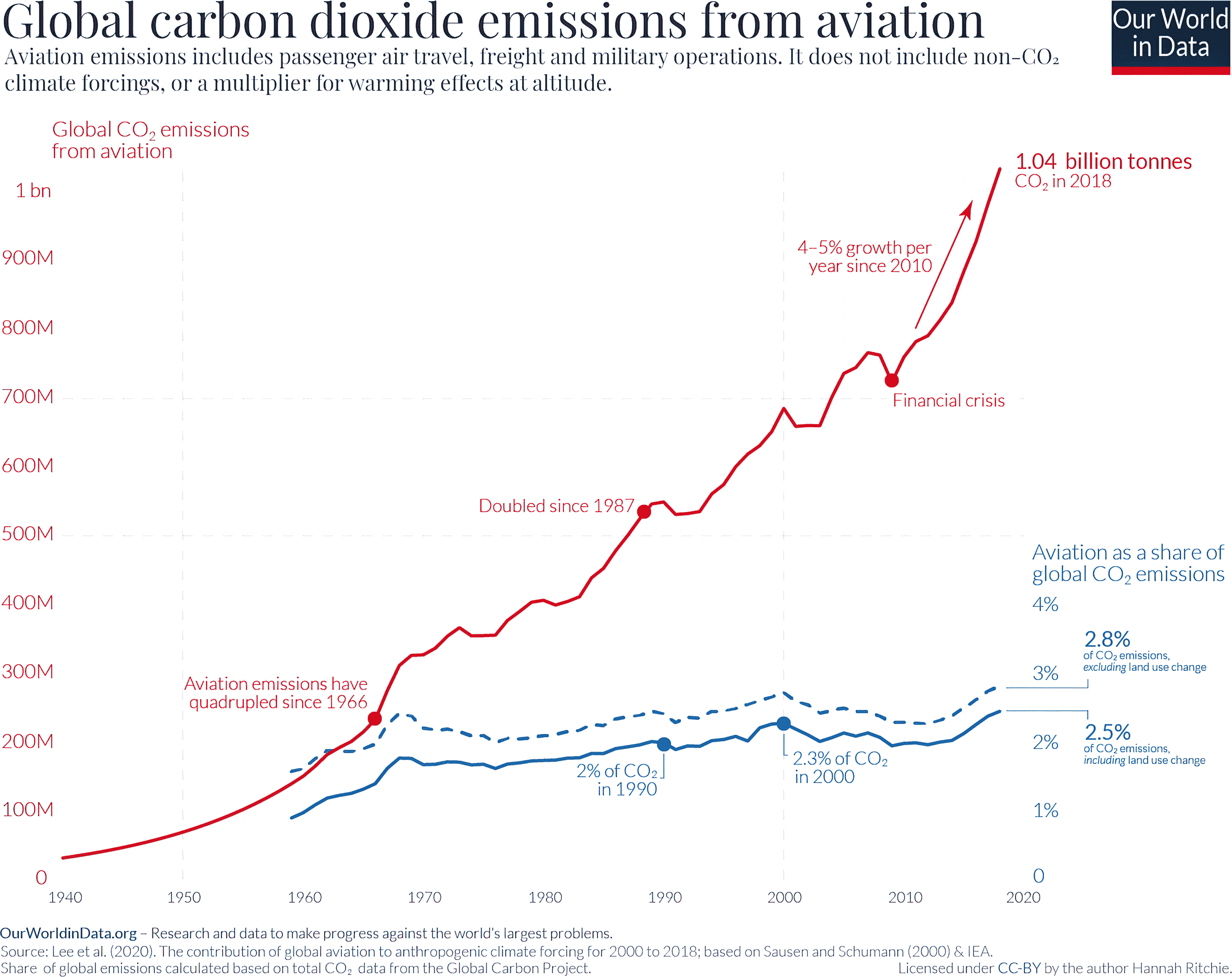- Aviation accounts for 2.8 per cent of global greenhouse gas emissions.
- Airlines belonging to the International Air Transport Association have pledged to reach net-zero emissions by 2050.
- Alternative fuels and engine innovations could help sustainable aviation become a reality.
Aviation is responsible for almost 3 per cent of global human-generated CO₂ emissions and without urgent action this could increase to 22 per cent by 2050, according to aviation-industry group Energy Transitions Commission. Already, airlines belonging to the International Air Transport Association (IATA) have committed to reaching net-zero emissions by 2050. This will mean that the volume of CO₂ emitted by airlines is balanced by the volume of emissions removed from the atmosphere.
The first net-zero flights are already taking off, with some using sustainable aviation fuel (SAF) and others offsetting flight emissions using a book-and-claim system for buying SAF. Here are three innovations that could help bring sustainable air travel a step closer.

Sustainable aviation fuels
Replacing kerosene that is traditionally used to fuel aeroplanes with sustainable alternatives offers considerable potential to cut flight emissions. Sustainable aviation fuels are largely made from forestry or agricultural waste rather than being derived from fossil fuels, giving them the potential to reduce airline CO₂ emissions by about 70 per cent.
Virgin Atlantic is planning a Boeing 787 demonstration flight in 2023, from London’s Heathrow airport bound for JFK airport in New York, which would be the world’s first net-zero transatlantic flight using SAF. However, safety regulations allow a maximum 50 per cent SAF blended with kerosene, so the remaining 30 per cent of the flight’s emissions will be offset through an investment in carbon removal technology.
SAFs are currently much more expensive than kerosene, but scaling production could help bring down costs and boost adoption by airlines. Other solutions, such as battery power or hydrogen fuel, are also being developed, but these are yet to be proven at scale.

Open fan architecture
Another part of the aviation industry’s sustainability agenda is a radical rethink of how aero engines are designed. Unlike conventional encased aeroplane engine blades, new engine designs are being developed that feature open fan architecture, which increases fuel efficiency and decreases flight emissions. Removing the blade casing increases flight efficiency as there is less weight to carry. The open design also enables larger fan blades to be fitted, which can move higher volumes of air around the engine rather than through it, reducing drag.
Working in partnership, GE Aviation and Safran have launched an aero engine development programme aiming to reduce single-aisle aircraft emissions by more than 20 per cent compared to today’s engines. Open fan architecture engines, which are compatible with alternative fuels like SAF and hydrogen, could enter service by the mid-2030s.
The CFM RISE (Revolutionary Innovation for Sustainable Engines) programme is also exploring hybrid electric engine designs, which could enable a number of aircraft systems to be electrified.
New propulsion systems
Hybrid electric propulsion is also being incorporated into a radical new type of power unit for aircraft. “New propulsion technologies will play an important role in achieving aviation’s net-zero goals, along with new aircraft designs and sustainable energy sources,” Sabine Klauke, Chief Technology Officer at aviation manufacturer Airbus, told Avionics International.
A consortium of aviation and aerospace companies, including Airbus, Pratt & Whitney, GKN Aerospace and Collins Aerospace, have joined forces with the University of Stuttgart on the Sustainable Water-Injecting Turbofan Comprising Hybrid-Electrics (SWITCH) project. The project combines hybrid-electric propulsion with water-enhanced turbofans (WET), which boosts flight efficiency by recovering water vapour from a plane’s exhaust and recycling it back into the engine’s combustion chamber. Electric motors can help reduce a flight’s carbon footprint by improving efficiency during takeoff, while in the air and landing, but especially when taxiing on the ground.
Innovating to streamline operations and develop low-carbon solutions is an important part of aviation industry efforts to reach net-zero emissions, but more needs to be done. Policymakers, regulators and business leaders need to agree an action plan to bring about real change, supported by a policy framework that encourages greater adoption of SAFs and low-carbon solutions by airlines. Initiatives like the World Economic Forum’s Clean Skies for Tomorrow programme brings together leaders from industry, government and civil society to help drive efforts to reach the net-zero emissions by 2050 goal.
This is a repost from weforum.org. Read the original article to find out about what World Economic Forum are doing to reduce aviation’s carbon footprint.





